Zhiqiang Zhou
GraphSubDetector: Time Series Subsequence Anomaly Detection via Density-Aware Adaptive Graph Neural Network
Nov 26, 2024



Abstract:Time series subsequence anomaly detection is an important task in a large variety of real-world applications ranging from health monitoring to AIOps, and is challenging due to the following reasons: 1) how to effectively learn complex dynamics and dependencies in time series; 2) diverse and complicated anomalous subsequences as well as the inherent variance and noise of normal patterns; 3) how to determine the proper subsequence length for effective detection, which is a required parameter for many existing algorithms. In this paper, we present a novel approach to subsequence anomaly detection, namely GraphSubDetector. First, it adaptively learns the appropriate subsequence length with a length selection mechanism that highlights the characteristics of both normal and anomalous patterns. Second, we propose a density-aware adaptive graph neural network (DAGNN), which can generate further robust representations against variance of normal data for anomaly detection by message passing between subsequences. The experimental results demonstrate the effectiveness of the proposed algorithm, which achieves superior performance on multiple time series anomaly benchmark datasets compared to state-of-the-art algorithms.
Infrared and visible Image Fusion with Language-driven Loss in CLIP Embedding Space
Feb 26, 2024Abstract:Infrared-visible image fusion (IVIF) has attracted much attention owing to the highly-complementary properties of the two image modalities. Due to the lack of ground-truth fused images, the fusion output of current deep-learning based methods heavily depends on the loss functions defined mathematically. As it is hard to well mathematically define the fused image without ground truth, the performance of existing fusion methods is limited. In this paper, we first propose to use natural language to express the objective of IVIF, which can avoid the explicit mathematical modeling of fusion output in current losses, and make full use of the advantage of language expression to improve the fusion performance. For this purpose, we present a comprehensive language-expressed fusion objective, and encode relevant texts into the multi-modal embedding space using CLIP. A language-driven fusion model is then constructed in the embedding space, by establishing the relationship among the embedded vectors to represent the fusion objective and input image modalities. Finally, a language-driven loss is derived to make the actual IVIF aligned with the embedded language-driven fusion model via supervised training. Experiments show that our method can obtain much better fusion results than existing techniques.
Semantic Object-level Modeling for Robust Visual Camera Relocalization
Feb 10, 2024



Abstract:Visual relocalization is crucial for autonomous visual localization and navigation of mobile robotics. Due to the improvement of CNN-based object detection algorithm, the robustness of visual relocalization is greatly enhanced especially in viewpoints where classical methods fail. However, ellipsoids (quadrics) generated by axis-aligned object detection may limit the accuracy of the object-level representation and degenerate the performance of visual relocalization system. In this paper, we propose a novel method of automatic object-level voxel modeling for accurate ellipsoidal representations of objects. As for visual relocalization, we design a better pose optimization strategy for camera pose recovery, to fully utilize the projection characteristics of 2D fitted ellipses and the 3D accurate ellipsoids. All of these modules are entirely intergrated into visual SLAM system. Experimental results show that our semantic object-level mapping and object-based visual relocalization methods significantly enhance the performance of visual relocalization in terms of robustness to new viewpoints.
AHPA: Adaptive Horizontal Pod Autoscaling Systems on Alibaba Cloud Container Service for Kubernetes
Mar 07, 2023Abstract:The existing resource allocation policy for application instances in Kubernetes cannot dynamically adjust according to the requirement of business, which would cause an enormous waste of resources during fluctuations. Moreover, the emergence of new cloud services puts higher resource management requirements. This paper discusses horizontal POD resources management in Alibaba Cloud Container Services with a newly deployed AI algorithm framework named AHPA -- the adaptive horizontal pod auto-scaling system. Based on a robust decomposition forecasting algorithm and performance training model, AHPA offers an optimal pod number adjustment plan that could reduce POD resources and maintain business stability. Since being deployed in April 2021, this system has expanded to multiple customer scenarios, including logistics, social networks, AI audio and video, e-commerce, etc. Compared with the previous algorithms, AHPA solves the elastic lag problem, increasing CPU usage by 10% and reducing resource cost by more than 20%. In addition, AHPA can automatically perform flexible planning according to the predicted business volume without manual intervention, significantly saving operation and maintenance costs.
Towards Out-of-Distribution Sequential Event Prediction: A Causal Treatment
Oct 24, 2022Abstract:The goal of sequential event prediction is to estimate the next event based on a sequence of historical events, with applications to sequential recommendation, user behavior analysis and clinical treatment. In practice, the next-event prediction models are trained with sequential data collected at one time and need to generalize to newly arrived sequences in remote future, which requires models to handle temporal distribution shift from training to testing. In this paper, we first take a data-generating perspective to reveal a negative result that existing approaches with maximum likelihood estimation would fail for distribution shift due to the latent context confounder, i.e., the common cause for the historical events and the next event. Then we devise a new learning objective based on backdoor adjustment and further harness variational inference to make it tractable for sequence learning problems. On top of that, we propose a framework with hierarchical branching structures for learning context-specific representations. Comprehensive experiments on diverse tasks (e.g., sequential recommendation) demonstrate the effectiveness, applicability and scalability of our method with various off-the-shelf models as backbones.
NetRCA: An Effective Network Fault Cause Localization Algorithm
Mar 07, 2022


Abstract:Localizing the root cause of network faults is crucial to network operation and maintenance. However, due to the complicated network architectures and wireless environments, as well as limited labeled data, accurately localizing the true root cause is challenging. In this paper, we propose a novel algorithm named NetRCA to deal with this problem. Firstly, we extract effective derived features from the original raw data by considering temporal, directional, attribution, and interaction characteristics. Secondly, we adopt multivariate time series similarity and label propagation to generate new training data from both labeled and unlabeled data to overcome the lack of labeled samples. Thirdly, we design an ensemble model which combines XGBoost, rule set learning, attribution model, and graph algorithm, to fully utilize all data information and enhance performance. Finally, experiments and analysis are conducted on the real-world dataset from ICASSP 2022 AIOps Challenge to demonstrate the superiority and effectiveness of our approach.
Oriented Feature Alignment for Fine-grained Object Recognition in High-Resolution Satellite Imagery
Oct 13, 2021



Abstract:Oriented object detection in remote sensing images has made great progress in recent years. However, most of the current methods only focus on detecting targets, and cannot distinguish fine-grained objects well in complex scenes. In this technical report, we analyzed the key issues of fine-grained object recognition, and use an oriented feature alignment network (OFA-Net) to achieve high-performance fine-grained oriented object recognition in optical remote sensing images. OFA-Net achieves accurate object localization through a rotated bounding boxes refinement module. On this basis, the boundary-constrained rotation feature alignment module is applied to achieve local feature extraction, which is beneficial to fine-grained object classification. The single model of our method achieved mAP of 46.51\% in the GaoFen competition and won 3rd place in the ISPRS benchmark with the mAP of 43.73\%.
Optimization for Oriented Object Detection via Representation Invariance Loss
Mar 22, 2021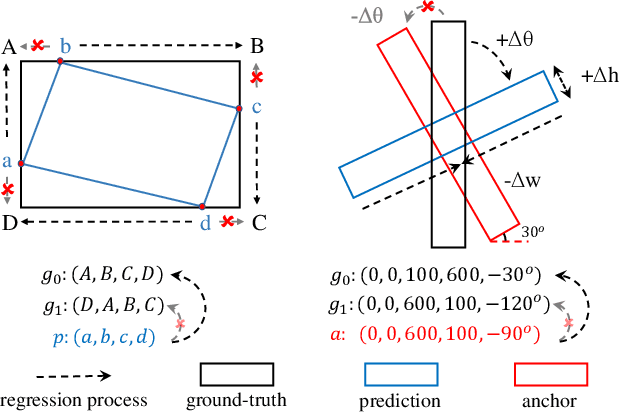

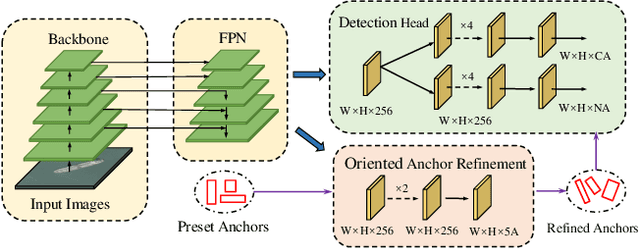
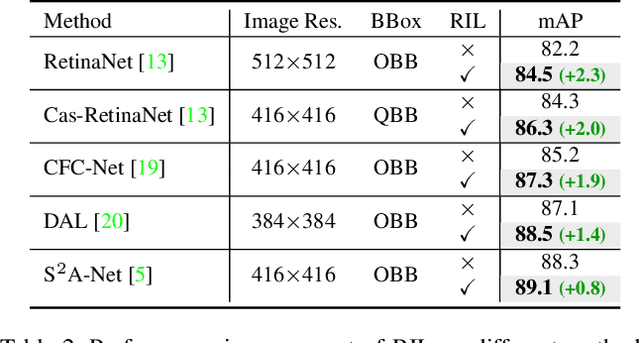
Abstract:Arbitrary-oriented objects exist widely in natural scenes, and thus the oriented object detection has received extensive attention in recent years. The mainstream rotation detectors use oriented bounding boxes (OBB) or quadrilateral bounding boxes (QBB) to represent the rotating objects. However, these methods suffer from the representation ambiguity for oriented object definition, which leads to suboptimal regression optimization and the inconsistency between the loss metric and the localization accuracy of the predictions. In this paper, we propose a Representation Invariance Loss (RIL) to optimize the bounding box regression for the rotating objects. Specifically, RIL treats multiple representations of an oriented object as multiple equivalent local minima, and hence transforms bounding box regression into an adaptive matching process with these local minima. Then, the Hungarian matching algorithm is adopted to obtain the optimal regression strategy. We also propose a normalized rotation loss to alleviate the weak correlation between different variables and their unbalanced loss contribution in OBB representation. Extensive experiments on remote sensing datasets and scene text datasets show that our method achieves consistent and substantial improvement. The source code and trained models are available at https://github.com/ming71/RIDet.
CFC-Net: A Critical Feature Capturing Network for Arbitrary-Oriented Object Detection in Remote Sensing Images
Jan 18, 2021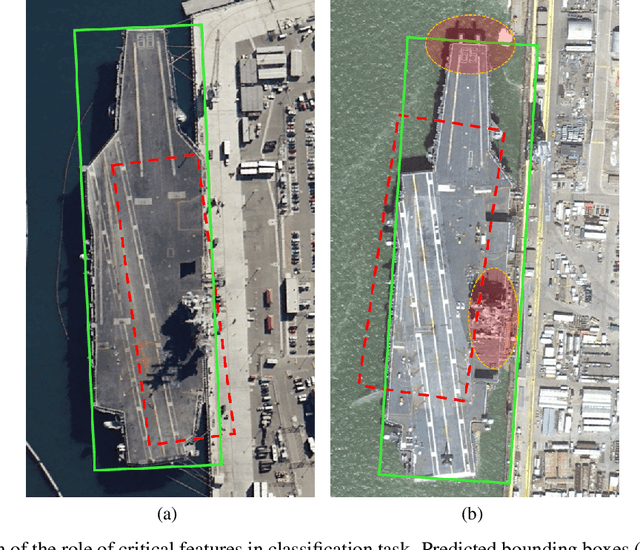
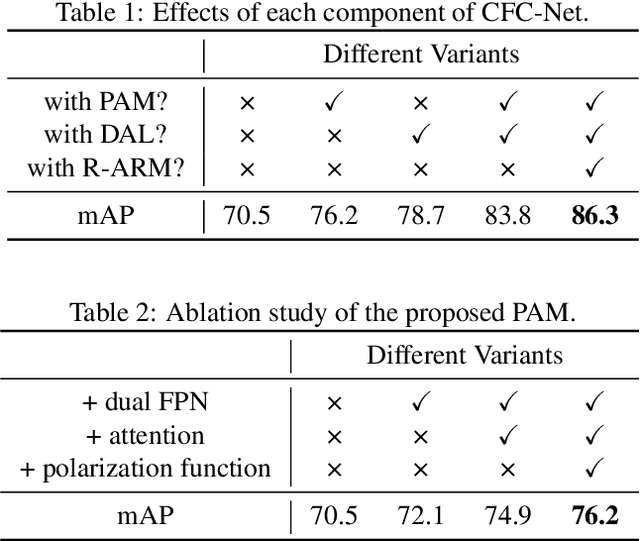

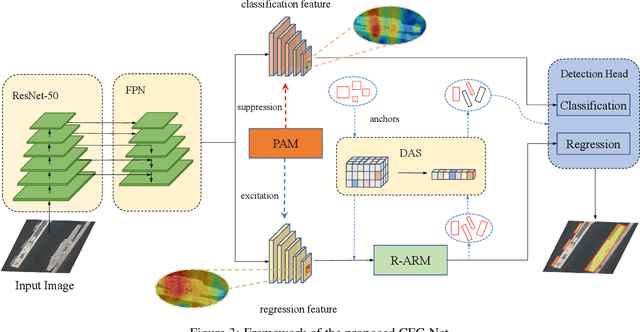
Abstract:Object detection in optical remote sensing images is an important and challenging task. In recent years, the methods based on convolutional neural networks have made good progress. However, due to the large variation in object scale, aspect ratio, and arbitrary orientation, the detection performance is difficult to be further improved. In this paper, we discuss the role of discriminative features in object detection, and then propose a Critical Feature Capturing Network (CFC-Net) to improve detection accuracy from three aspects: building powerful feature representation, refining preset anchors, and optimizing label assignment. Specifically, we first decouple the classification and regression features, and then construct robust critical features adapted to the respective tasks through the Polarization Attention Module (PAM). With the extracted discriminative regression features, the Rotation Anchor Refinement Module (R-ARM) performs localization refinement on preset horizontal anchors to obtain superior rotation anchors. Next, the Dynamic Anchor Learning (DAL) strategy is given to adaptively select high-quality anchors based on their ability to capture critical features. The proposed framework creates more powerful semantic representations for objects in remote sensing images and achieves high-performance real-time object detection. Experimental results on three remote sensing datasets including HRSC2016, DOTA, and UCAS-AOD show that our method achieves superior detection performance compared with many state-of-the-art approaches. Code and models are available at https://github.com/ming71/CFC-Net.
Dynamic Anchor Learning for Arbitrary-Oriented Object Detection
Dec 15, 2020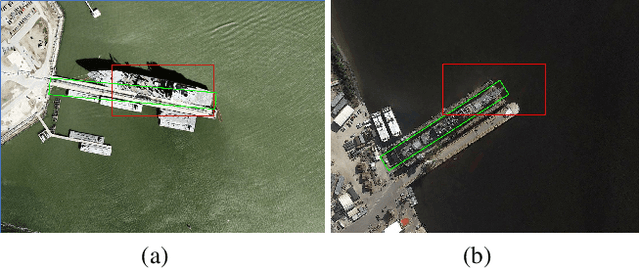
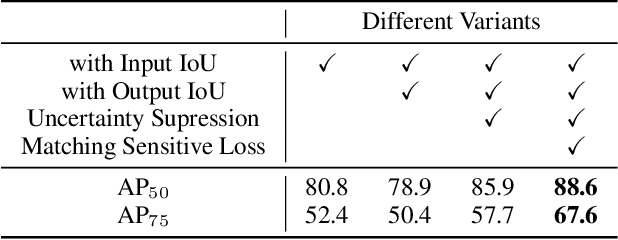
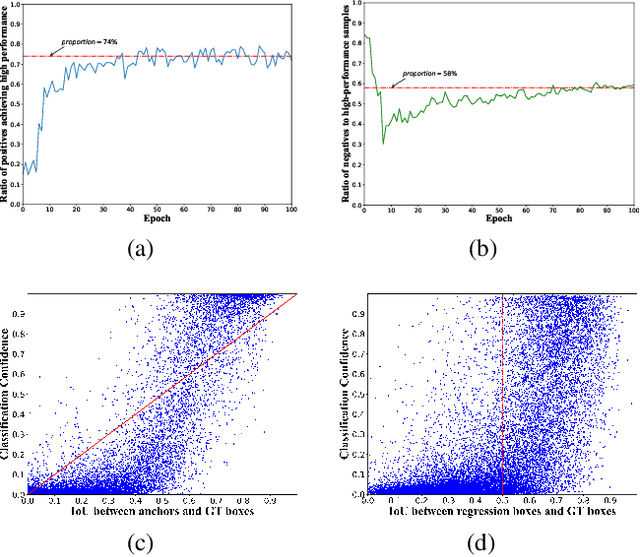
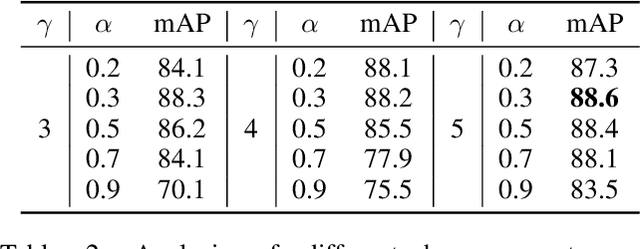
Abstract:Arbitrary-oriented objects widely appear in natural scenes, aerial photographs, remote sensing images, etc., thus arbitrary-oriented object detection has received considerable attention. Many current rotation detectors use plenty of anchors with different orientations to achieve spatial alignment with ground truth boxes, then Intersection-over-Union (IoU) is applied to sample the positive and negative candidates for training. However, we observe that the selected positive anchors cannot always ensure accurate detections after regression, while some negative samples can achieve accurate localization. It indicates that the quality assessment of anchors through IoU is not appropriate, and this further lead to inconsistency between classification confidence and localization accuracy. In this paper, we propose a dynamic anchor learning (DAL) method, which utilizes the newly defined matching degree to comprehensively evaluate the localization potential of the anchors and carry out a more efficient label assignment process. In this way, the detector can dynamically select high-quality anchors to achieve accurate object detection, and the divergence between classification and regression will be alleviated. With the newly introduced DAL, we achieve superior detection performance for arbitrary-oriented objects with only a few horizontal preset anchors. Experimental results on three remote sensing datasets HRSC2016, DOTA, UCAS-AOD as well as a scene text dataset ICDAR 2015 show that our method achieves substantial improvement compared with the baseline model. Besides, our approach is also universal for object detection using horizontal bound box. The code and models are available at https://github.com/ming71/DAL.
 Add to Chrome
Add to Chrome Add to Firefox
Add to Firefox Add to Edge
Add to Edge